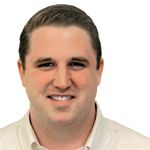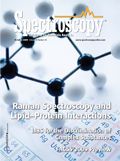Spectroscopy Ramps Up as the Year Winds Down
It has been said that time seems to move faster the older you get, and judging by how quickly we have reached the end of 2009, I would say this cliché is certainly valid. With the holiday season just around the corner, 2009 is nearing a close, and even though this may mean vacation time and more time away from work for many, for those in the field of spectroscopy, this time of year (ironically) has always meant an uptick in conference and symposia activity.
It has been said that time seems to move faster the older you get, and judging by how quickly we have reached the end of 2009, I would say this cliché is certainly valid. With the holiday season just around the corner, 2009 is nearing a close, and even though this may mean vacation time and more time away from work for many, for those in the field of spectroscopy, this time of year (ironically) has always meant an uptick in conference and symposia activity.

David Walsh
With the annual FACSS Conference taking place in Louisville, Kentucky, October 18–22 (see Spectroscopy's "FACSS Preview" in this issue for more coverage), the ball begins rolling on a series of industry events. After November's Eastern Analytical Symposium and Exposition, held November 16–19 in Somerset, New Jersey, the industry takes a quick breath for the holidays and moves straight on to the IFPAC Conference in Baltimore in January and then, of course, Pittcon 2010 in Orlando, Florida, next February. In short, spectroscopists and other industry professionals will be getting a lot of exercise in the coming months.
And as you travel to these conferences and others this fall and winter, Spectroscopy can be your primary resource for staying up to date on the market and the latest technical developments. With a LinkedIn group that is now over 600 strong providing constant news, discussions, and technical information, this is the perfect way to stay current, whether you're traveling to Louisville, Orlando, or any points in between. We would invite any and all of our readers to join this group at their convenience, and in addition, to take a look at our homepage, which will be undergoing something of a facelift later this year as well.
In the meantime, we hope you enjoy this month's continuing coverage of the hottest topics in the field of spectroscopy. With a technical article on Raman analysis of lipids and proteins, along with further research on LIBS analysis of lead in children's toys and other items, we continue to do our best to bring you the most useful and pertinent technical information. Enjoy.

David Walsh
Editor-in-Chief

LIBS Illuminates the Hidden Health Risks of Indoor Welding and Soldering
April 23rd 2025A new dual-spectroscopy approach reveals real-time pollution threats in indoor workspaces. Chinese researchers have pioneered the use of laser-induced breakdown spectroscopy (LIBS) and aerosol mass spectrometry to uncover and monitor harmful heavy metal and dust emissions from soldering and welding in real-time. These complementary tools offer a fast, accurate means to evaluate air quality threats in industrial and indoor environments—where people spend most of their time.
NIR Spectroscopy Explored as Sustainable Approach to Detecting Bovine Mastitis
April 23rd 2025A new study published in Applied Food Research demonstrates that near-infrared spectroscopy (NIRS) can effectively detect subclinical bovine mastitis in milk, offering a fast, non-invasive method to guide targeted antibiotic treatment and support sustainable dairy practices.
Smarter Sensors, Cleaner Earth Using AI and IoT for Pollution Monitoring
April 22nd 2025A global research team has detailed how smart sensors, artificial intelligence (AI), machine learning, and Internet of Things (IoT) technologies are transforming the detection and management of environmental pollutants. Their comprehensive review highlights how spectroscopy and sensor networks are now key tools in real-time pollution tracking.